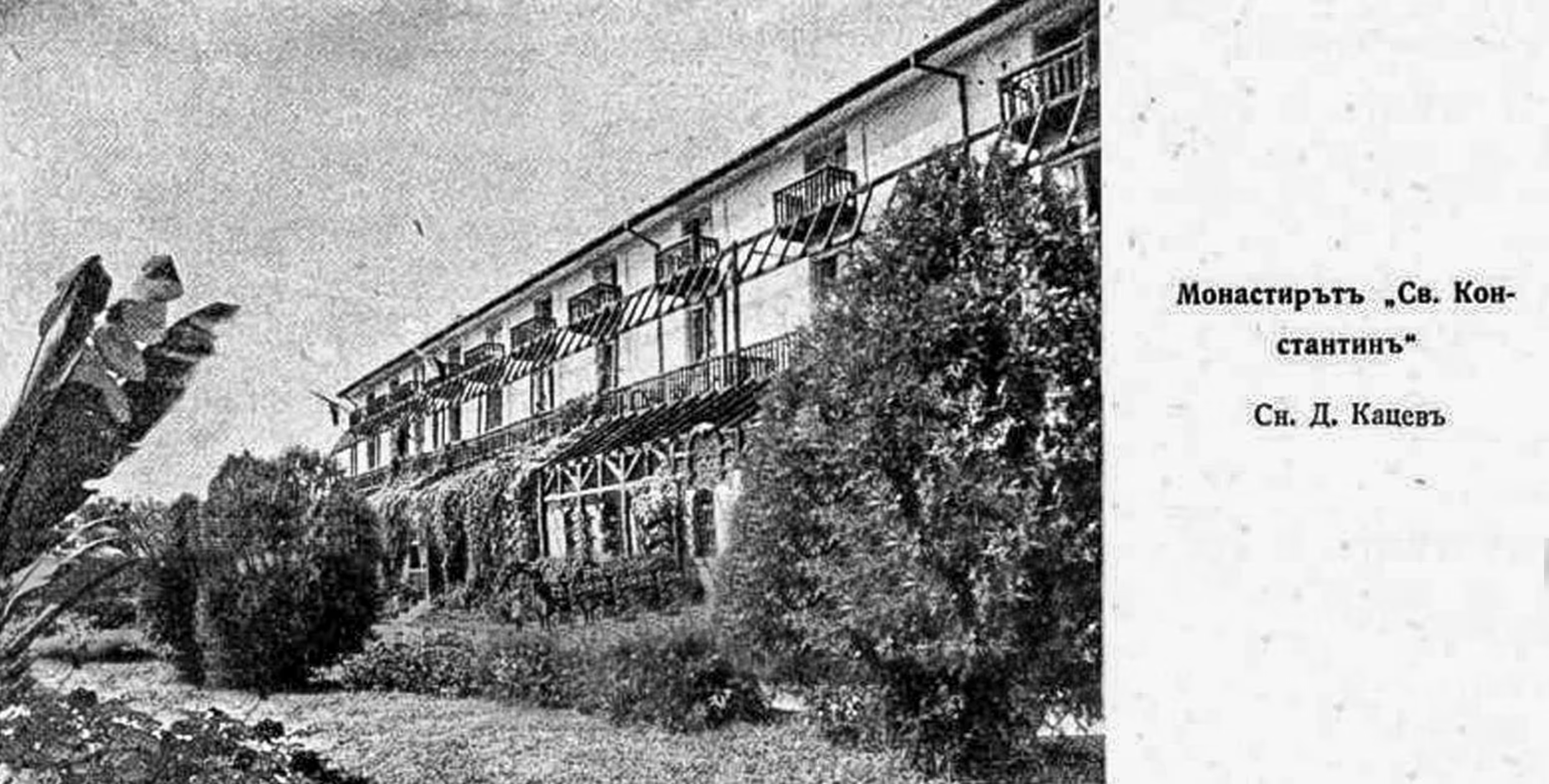
Година на построяване
–
Кратка информация
The object is a complex of nine buildings intended for religious activities. The first information about this place is from the time of Tsar Ivan-Alexander (1331-1371). At that time, on the site of the current "Euxinograd" palace, there was a fortress founded by Genoese merchants called "Castritsi". A little further north, around a clearing in the dense forest at the time, the inhabitants of the fortress built a small chapel. Cells for pilgrims were built around it, which grew into the Holy Abode - a monastery. His name is associated with a legend that says that in the 16th century, after a shipwreck, the only survivor carried an icon of St. St. Constantine and Elena. The earliest official dating is based on an inscription on the oldest icon in the temple, namely - 1713. Another written record of the existence of the monastery is from a book by the Russian military historian Victor Teplyakov from 1828 - 1829. According to a serf act from 1822, the monastery "St. St. Konstantin and Elena" owns 32 decares of land. At that time, it was managed by the Greek metropolis. In 1832, the venerable hieromonk brothers Theodosius and Agapiy Kantarjievi from Veliko Tarnovo arrived in the monastery. With the monastery "St. St. Constantine and Helena" was taken up by Rev. Hieromonk Agapiy. (The other brother Rev. Hieromonk Theodosius took care of the monastery "St. Dimitar, located next door - on the territory of the current palace "Euxinograd".) From this period are the one-story buildings northwest and west of the church, the fountain in the yard and the stone fence . On the property of the monastery, vineyards and gardens are planted. In 1891, the Varna District Council decided to deal with the ownership of the property. A final decision on the filed case was made only in 1919. by the International Court in The Hague, and it is in favor of the Bulgarians. The permanent committee of the Varna District Council becomes the owner. In this period, a Practical Wine School (1901) was built, which was later converted into rest rooms for vacationing families. One of the old buildings with 12 rooms was upgraded (the building with the fountain - 1919), the new two-story wing was built in the southwestern part of the complex (1911), a new oven was built to serve the holidaymakers with a buffet (1912 - 1913 ). The food was eaten outdoors, on the lawn in front of the buffet. Electricity and water supply have been installed, drainage measures have been carried out. 100 decares were designated in the neighborhood for an experimental field that supplied the complex with products. This is how the resort "St. st konstantin and Elena". The state in which the church is located is from 1972. Then the current iconostasis was placed on the aismo, and the wooden dome on the roof. At that time, the complex was turned into a museum. Services are held only during the tourist season. The status of a monastic monastery was restored in 1999 during the ministry of Archimandrite Seraphim Genovski.
The buildings in the complex were built in different historical periods - from 1713 to 1913. All of them have a high degree of authenticity and are almost completely preserved in their original form. The same applies to the improvement elements.
The site lacks original construction documentation. There is a complete architectural survey from 2013 and archival photographs from the late 19th century to the present. The complex has been well studied in terms of the construction and functional part. A scientific study of artistic movable and immovable artistic cultural values is lacking. No archaeological survey has been done.
In terms of town planning, the complex is a city-forming factor for KK "St. Constantine and Elena" in a physical and meaningful sense. Given the numerous functional changes recently, the complex has been preserved as close as possible to the level of the original functions. Precisely as such, it has a significant economic potential and is successfully included in the cultural-tourist system.
The object is extremely popular on a regional, national and international level. It has a high degree of value in terms of educational and spiritual significance.
Автор
Техническо състояние
Good
Собственост (преобладаваща)
Private
Вид НКЦ
–
Статут НКЦ
–
Категория
–
Адрес
Подобни обекти

1 Tsar Simeon I Street, Center, Varna

"Captain G. Georgiev" street, Kraibrezhna alley, Varna

73 Vasil Drumev St., Center, Varna

Bus stop #880419 R-T BOROVETS, Varna

"Captain Georgi Georgiev" street, Primorski district, Varna

Salzitsa locality, Mladost district, Varna





















.avif)



.avif)




